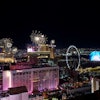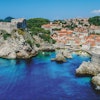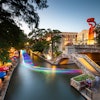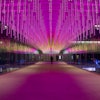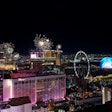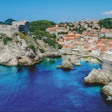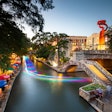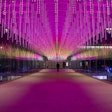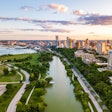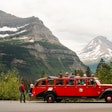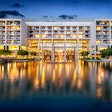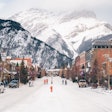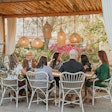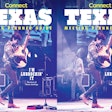When old man winter rears his ugly head, the best thing you can do to boost your conference attendance is to head to Florida—right?
If cities like Milwaukee, Minneapolis and Indianapolis have anything to say about it, the answer is: not necessarily.
Historically, the Midwest has been beloved for its summers (if you’ve ever taken a river boat tour in Chicago in June, you’ll understand why), and utterly feared in the winters.
Yet that’s only a thought of the uneducated, say tourism leaders in this region. They’ll let you in on a little secret that experienced meeting planners know: Midwest destinations continue to mean business all year long, and events held there during winter are typically a raging success—even in sub-zero temperatures seen this week.
Milwaukee Digs In
“People think we’re like the tundra and that nothing can be done here in the winter months,” says Marco Bloemendaal, senior vice president of sales for Visit Milwaukee.
“We actually have to fight that stereotype a lot, when people think they’re going to be knee deep in snow and fight the weather at the airports.” In reality, Milwaukee has an average winter temperature of 28 degrees and an average snowfall of 45 inches, says Bloemendaal.
It’s not that bad compared to other destinations, and it doesn’t affect business at all. “We recently had our regular business—conventions, meetings and overall leisure—analyzed, and surprisingly even to us, business is basically at the same percentage for each of the four quarters,” says Bloemendaal.
For Milwaukee, annual repeat business and state association meetings provide the warm thoughts.
They CVB has even seen increased demand for fourth-quarter business over the last few years. Bloemendaal says the number of national conventions they’ve been able to bid on or book for November and December has increased dramatically, in part from customers saying October has gotten too expensive due to high demand.
Regular weeks in winter might see room rates $30-$40 less than other times of year. Meetings held between Christmas and New Year’s, when hotel occupancy drops, can often score great incentives, Bloemendaal says.
One creative incentive from a local hotel recently centered on a morning essential: Whatever the high temperature is that day is the price you’ll pay for a gallon of coffee. Another boon for winter meetings in Milwaukee is a heated skywalk that connects 1,700 hotel rooms to the Wisconsin Center, which has more than 188,000 square feet of contiguous exhibit space. Yet even Bloemendaal admits they’ve got nothing on a certain Minnesota city in this area.
Minneapolis Hits Play
The nine-mile, temperature-controlled Minneapolis Skyway has added a huge sense of comfort for meeting planners, not only in winter, but year-round—such as if it happens to be raining, or hot and humid, says Melvin Tennant, CAE, president and CEO of Meet Minneapolis.
While the first quarter is the lowest season for national meetings in the city, Tennant says it’s a popular time for state agriculture conferences, such as Midwest Poultry Federation Convention, to meet. It’s also a period when Minneapolis Convention Center hosts most of its annual public events, like auto or home and garden shows.
“We fill in nicely with regional and state conventions when there are not as many national conventions to go around,” says Tennant. The city’s latest message is one that’s tackling its coldest months head on: “We don’t look at winter as a liability; we look at it as an asset,” says Tennant.
The CVB was able to demonstrate its warm hospitality when Minneapolis was home to Super Bowl LII. Over the game weekend, Meet Minneapolis brought in 80 meeting planners to participate in many different activities and events, such as a snowmobile flip contest downtown.
The temperature on Sunday morning was -6 degrees with a wind chill of -25—yet everything went off without a hitch. “The point was to show that if we can manage the Super Bowl in winter, we can handle anything that comes our way with your convention,” says Tennant. At least a few of those meeting planners have booked meetings in the city as a result of that experience.
Indianapolis Zooms Along
A third Midwest city showing no signs of slowing during winter is Indianapolis. Daren Kingi, senior vice president of sales for Visit Indy, says their most famous race—the Indianapolis 500, held each May—attracts people globally year-round.
Yet the leisure market here plays second fiddle to meetings. “Indy is the No. 1 most group-dependent city in America,” says Kingi. The CVB embarked on this strategy 30 years ago, going after sporting groups and luring the NFL’s Colts from Baltimore.
The massive expansion to Indiana Convention Center and Lucas Oil Stadium in 2011 has been a tremendous asset to growing group business, too. Association, trade show and sports make up the largest piece of the meetings pie, yet Kingi says they’re seeing a shift to more professional associations, like doctors and surgeons groups, as well as an increase in corporate leads.
Business in the first and second quarter remains strong, says Kingi, and March Madness continues to be a focal point for the city. He’s already looking ahead to 2021, when Indianapolis will host the NCAA’s Men’s Final Four.
As far as Kingi is concerned, the seasons don’t matter much to Indy’s meeting business; in recent years, Q1 has finished with an occupancy of 77 percent, which “just doesn’t happen in a city with a traditional winter,” he says.
Having lived all around the country, from New Jersey to Los Angeles, he’s pleased when a 50-degree winter day happens in Indy, as it did in 2012 for Super Bowl XLVI there.
“The moderate weather completely, pleasantly surprises me,” he says. “I don't have to clear the driveways as much.”
